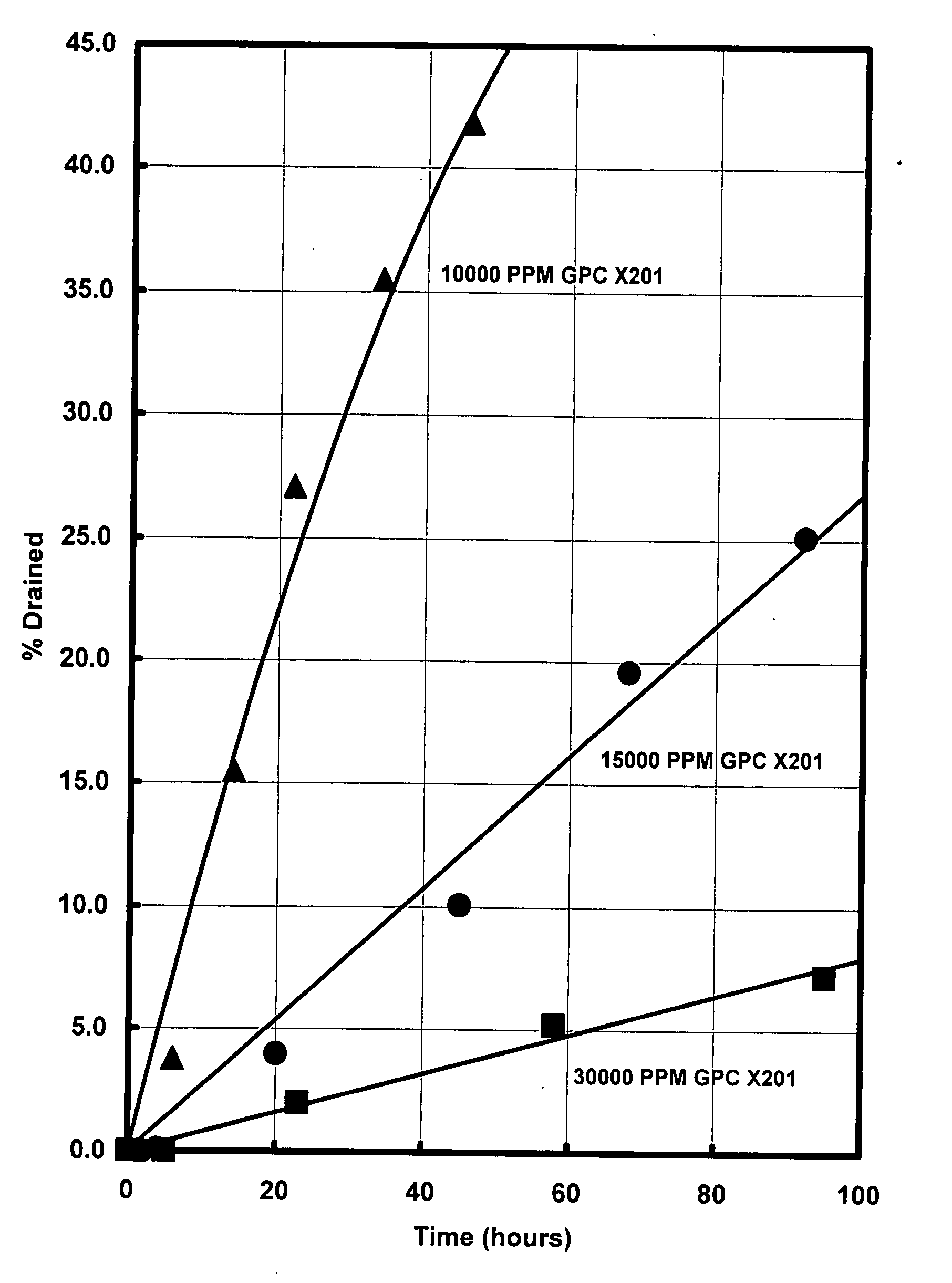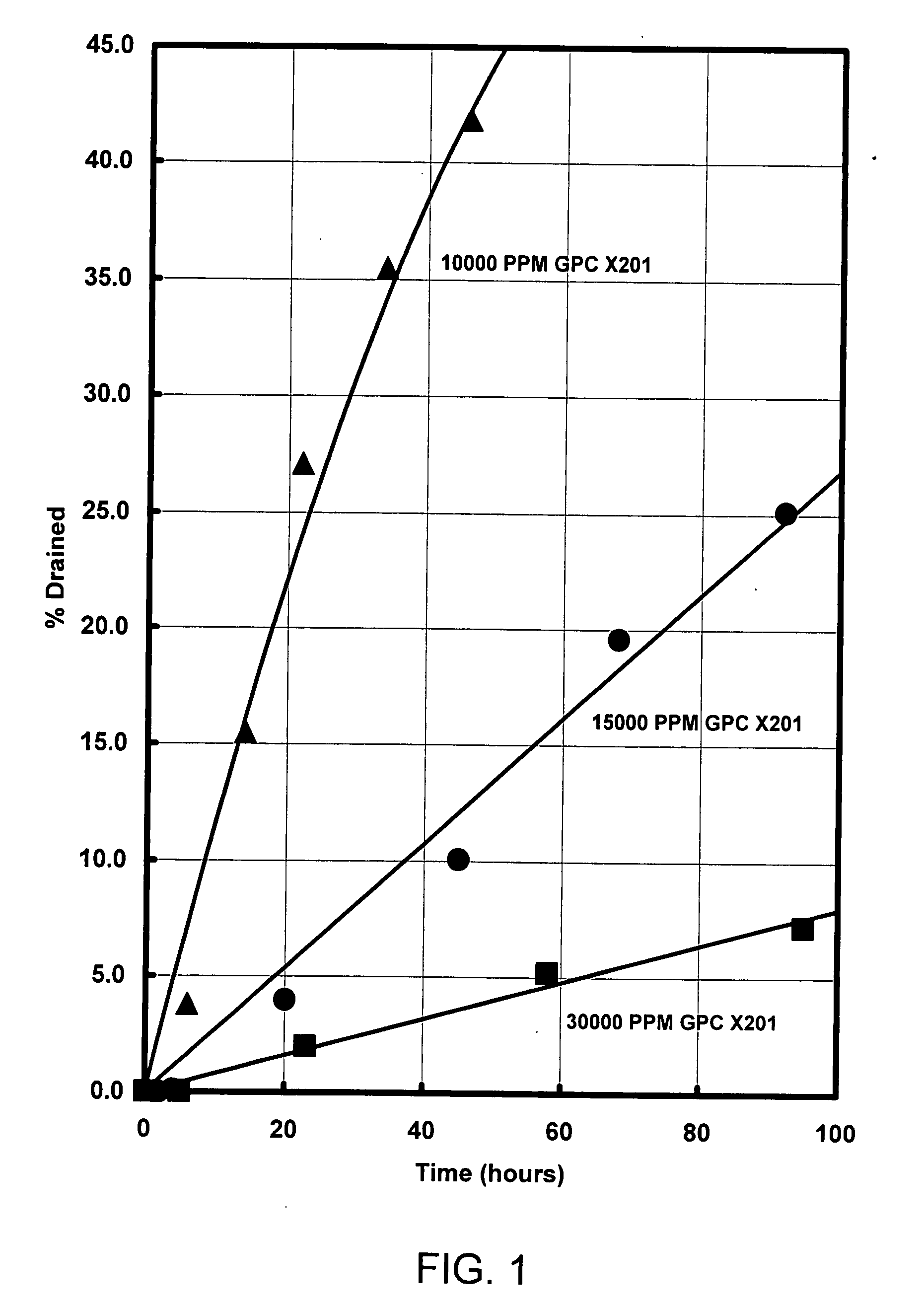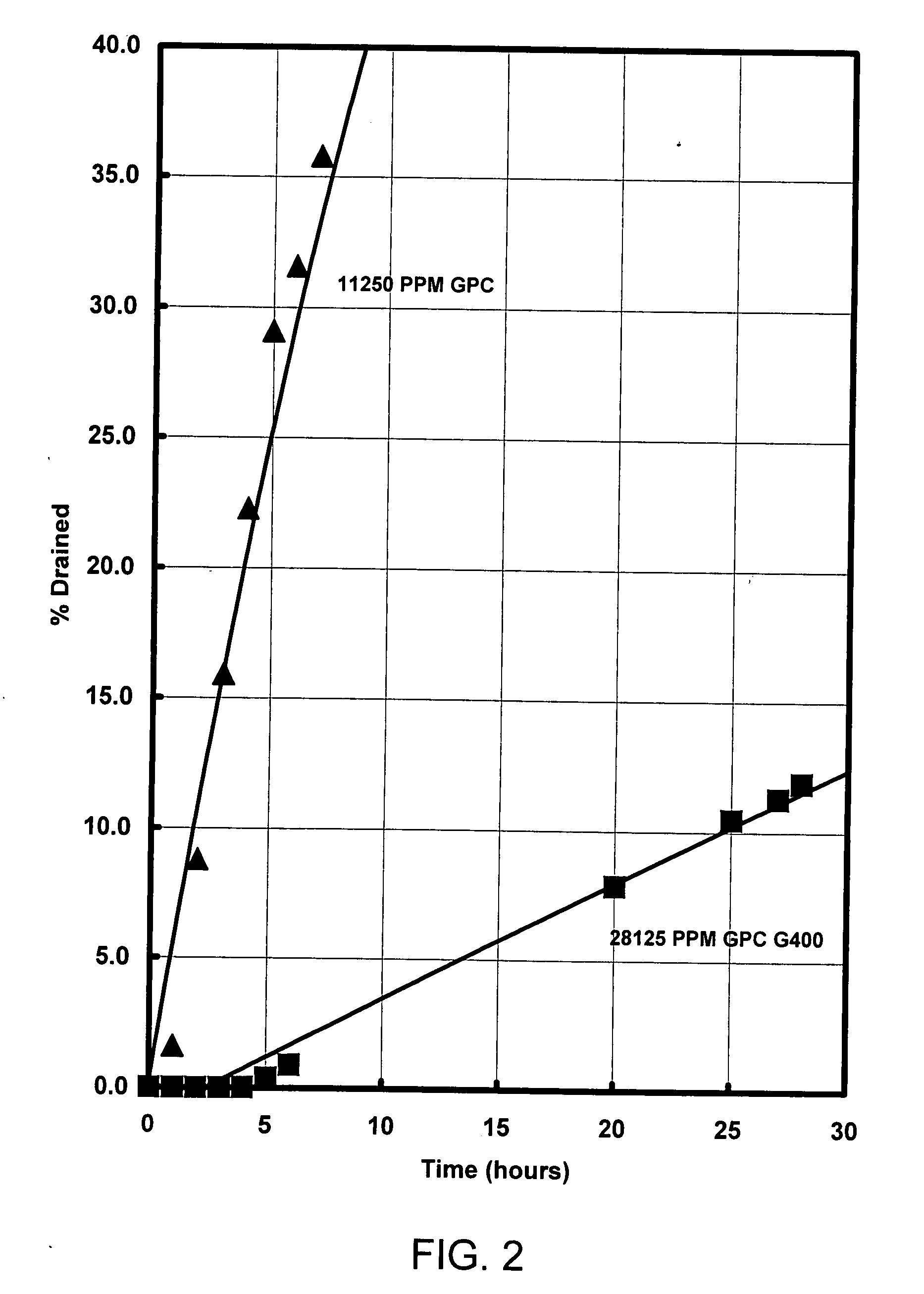Foam composition
a technology of foam composition and composition, applied in the field of water-based (aqueous) foam composition, can solve the problems of short list of viable foaming systems, difficult implementation of two component systems, i.e., the foaming system plus the catalyst for cross-linking or curing, etc., to achieve automatic production capacity of process installations, reasonable viscosity, and easy handling
- Summary
- Abstract
- Description
- Claims
- Application Information
AI Technical Summary
Benefits of technology
Problems solved by technology
Method used
Image
Examples
example one
[0044]For reference, a typical commercial batch of product, in accordance with Kittle U.S. Pat. No. 5,853,050, prepared by the procedure previously outlined had the following composition:
Keratin protein4.00weight percentAmylopectin starch4.00Ferrous sulfate8.00TSFL4.00Biocide0.50Ammonium hydroxide0.40Water79.10Total100.00
The physical characteristics of this composition are: (a) pH at room temperature, 6.2-6.4; (b) weight percent solids, 15.50; (c) viscosity after the material was allowed to rest overnight, measured using a Brookfield viscometer, at room temperature, at spindle #4 speeds of 6, 12, 30, 60, was 19000, 10000, 4800, 3000 cps, respectively.
example two
[0045]By contrast when the same composition is prepared using the same ingredients, but omitting the amylopectin and substituting Grain Processing Corporation's X201 cationic modified starch, the composition was as follows:
Keratin protein4.00weight percentGPC X201 starch4.00Ferrous sulfate8.00TSFL4.00Biocide0.50Ammonium hydroxide0.40Water79.10Total100.00,
the physical characteristics were identical to those of Example One, except that the viscosity was less than 100 cps.
example three
[0046]In this example, the composition of Example Two was extended to a higher starch level, and was as follows:
Keratin protein4.00weight percentGPC X201 starch6.00Ferrous sulfate8.00TSFL4.00Biocide1.00Ammonium hydroxide0.50Water76.50Total100.00,
The increased starch content did not significantly increase the viscosity. The pH remained in the same range, and the solids increased to 17.49. Repetition of the same composition demonstrated the expected reproducibility.
PUM
| Property | Measurement | Unit |
|---|---|---|
| temperature | aaaaa | aaaaa |
| temperature | aaaaa | aaaaa |
| foamable | aaaaa | aaaaa |
Abstract
Description
Claims
Application Information
 Login to View More
Login to View More - R&D
- Intellectual Property
- Life Sciences
- Materials
- Tech Scout
- Unparalleled Data Quality
- Higher Quality Content
- 60% Fewer Hallucinations
Browse by: Latest US Patents, China's latest patents, Technical Efficacy Thesaurus, Application Domain, Technology Topic, Popular Technical Reports.
© 2025 PatSnap. All rights reserved.Legal|Privacy policy|Modern Slavery Act Transparency Statement|Sitemap|About US| Contact US: help@patsnap.com



